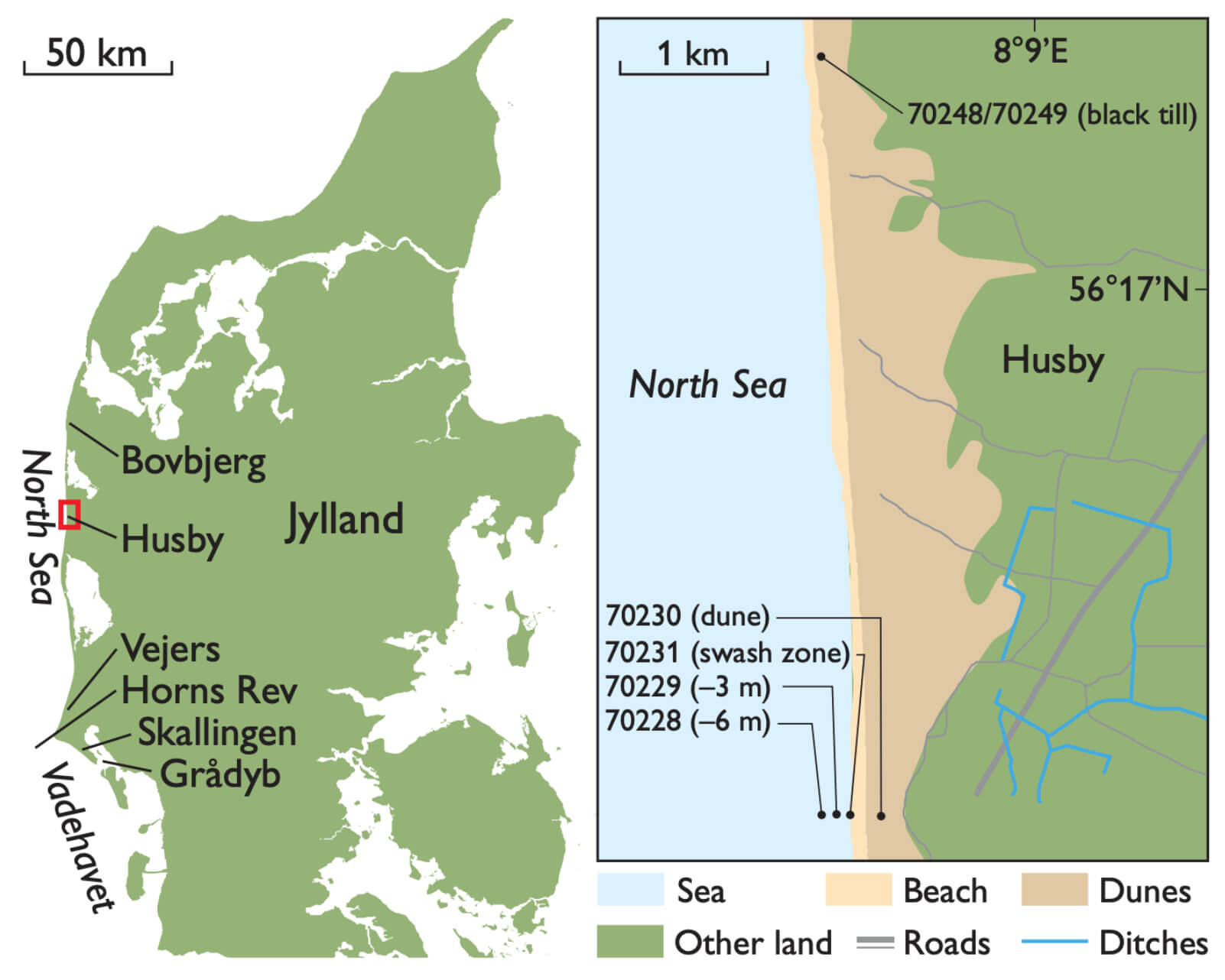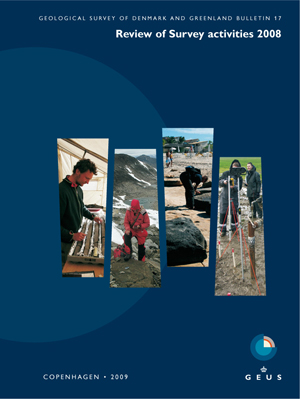
How to Cite
Share
Abstract
The Danish North Sea coast is a dynamic sedimentary environment experiencing erosion, transport and re-deposition of sand along the coast. Because of the natural and economic value of the coastal zone expensive protection measures such as nourishment of the coast are undertaken. The present study utilises provenance analysis techniques developed at the Geological Survey of Denmark and Greenland (GEUS) to characterise the coastal sand bodies by fingerprinting the heavy minerals in the sand. The aims of the study are to test these new methods in an active sedimentary environment and to develop an understanding of transport pathways along the coast. A total of c. 40 samples have been collected and analysed as part of the project. This paper gives an outline of the project and provides examples of the methods used based on six samples from the Husby profile on the west coast of Jylland (Fig. 1). The study is a collaboration project involving GEUS and the Department of Geography and Geology (DGG) at Copenhagen University; GEUS is responsible for the analyses and DGG for sample collection.
How to Cite
Share
Copyright (c) 2009 Christian Knudsen, Thomas Kokfelt, Troels Aagaard, Jesper Bartholdy, Morten Pejrup

This work is licensed under a Creative Commons Attribution 4.0 International License.
Downloads
Edited by Ole Bennike, Adam A. Garde and W. Stuart Watt
This Review of Survey activities presents a selection of 19 papers reflecting the wide spectrum of activities of the Geological Survey of Denmark and Greenland, including field-based, laboratory and remote sensing studies.
The Survey's activities in Denmark are illustrated by ten articles covering the [...]









